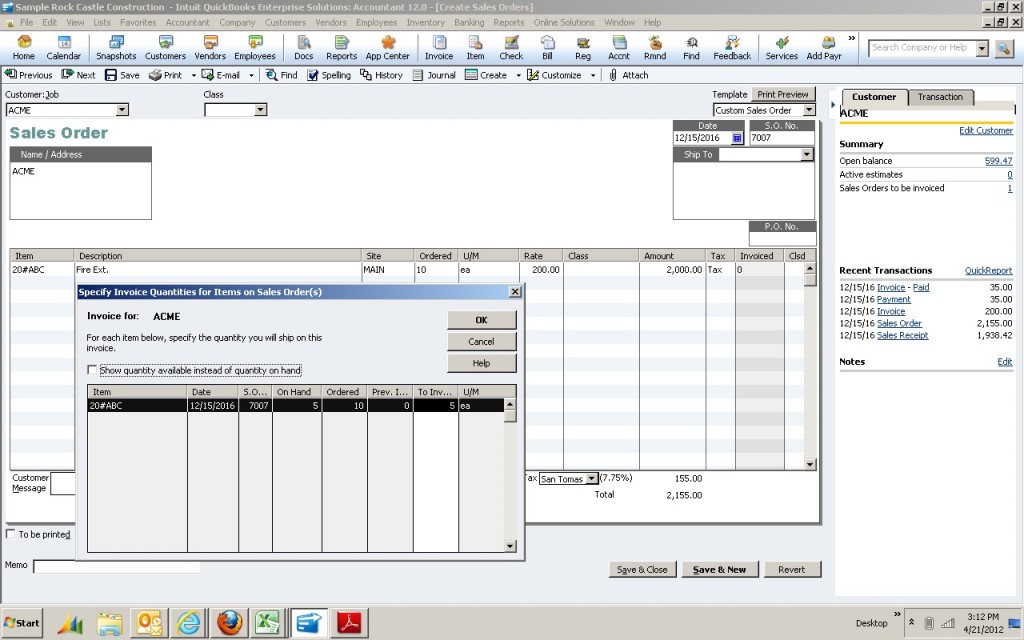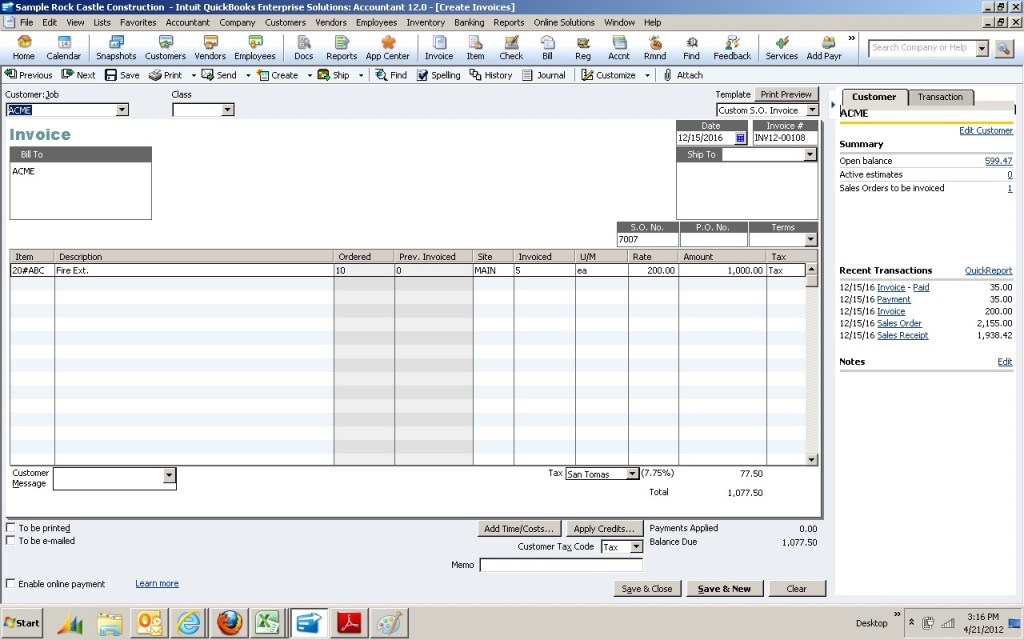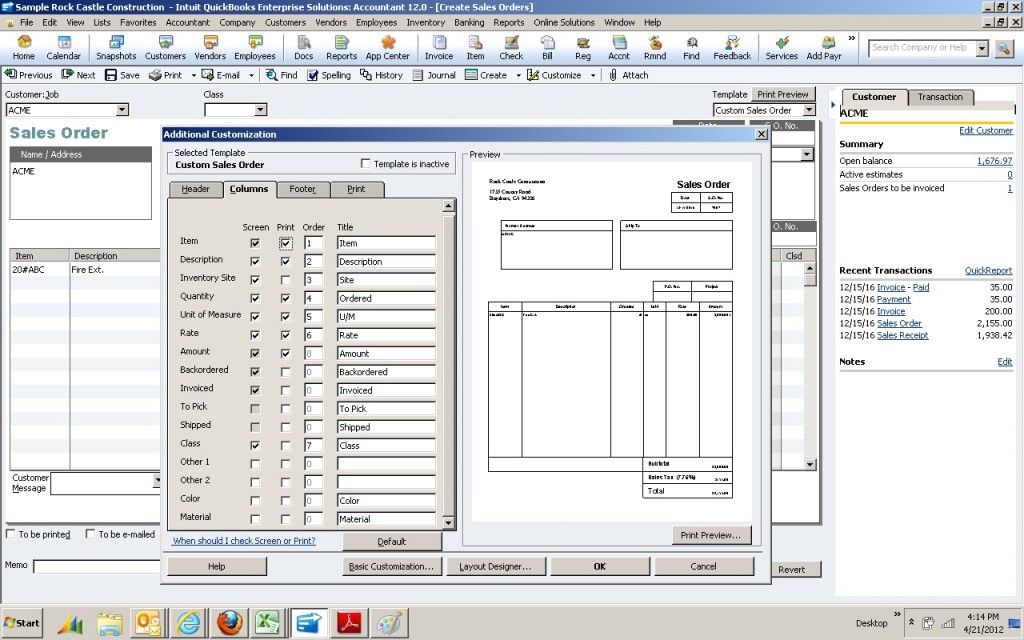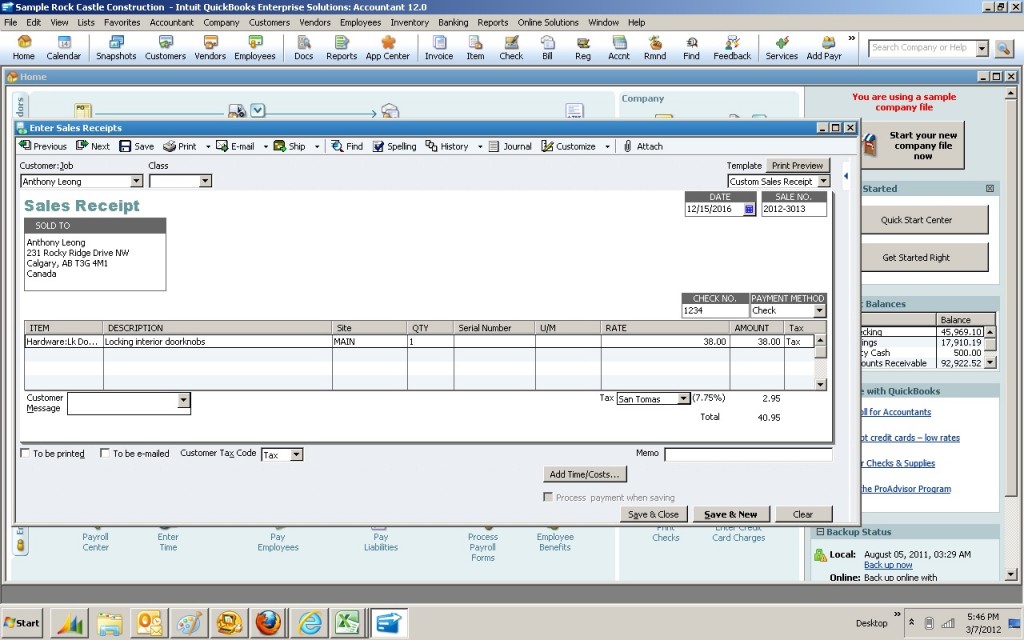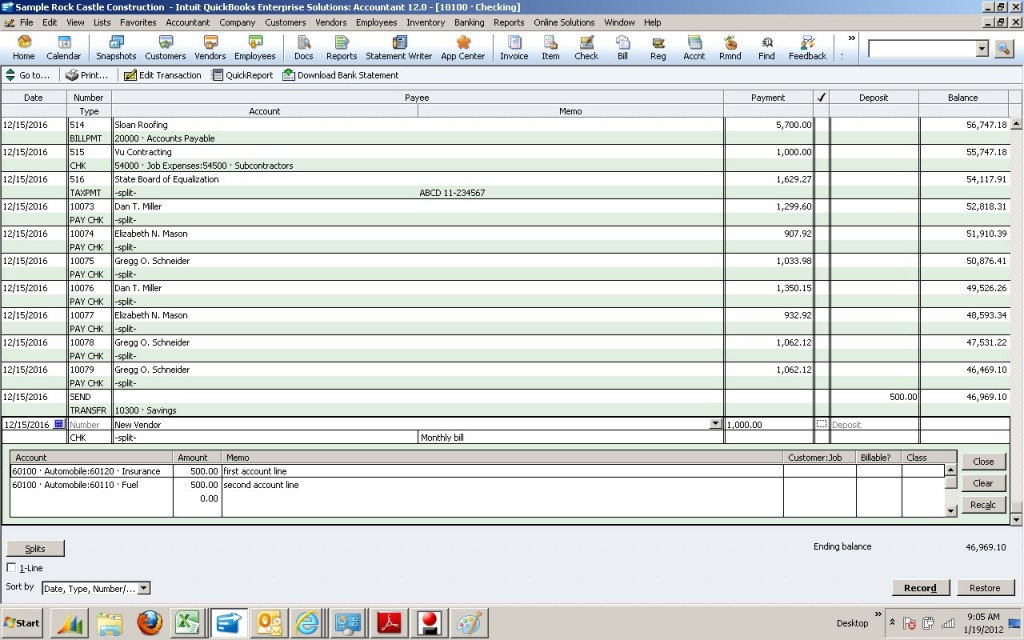Chax software offers MICR printing of checks on blank check stock in Peachtree, Quickbooks, and other programs. http://www.chax.com/check-printing-software.htm
For this particular application I needed software to work with both Quickbooks and Peachtree, and that supported more than ten checkbook accounts so I choose the Ultimate version for $299.
Also for the printer I choose an HP P2035 and I ordered a MICR (magnetic ink) toner cartridge. A regular toner cartridge is not recommended.
I setup six checkbook accounts for Accounts Payable checks, and six checkbooks accounts for Payroll. So right away I had 12 checkbooks. You will setup a Control for each type of check you want to print. So I had a Peachtree control for payables checks and a Peachtree – Payroll control for payroll checks. Each control will hold the bank accounts, and I setup six in each with a starting control number of 001 through 006.
The Control setup is easy. First print the grid for your particular check. Then setup the input control. From the grid you will enter the starting row and position where the payee name and address, amount, amount in words, etc occur in the print stream of the check. The output control is used to adjust the horizontal and vertical positioning which in most cases may not be necessary. I ran the system in Manual mode since I wanted to be prompted to select the bank name when printing. The security feature is good and I had a userid for Payables checks, and a userid for Payroll checks.
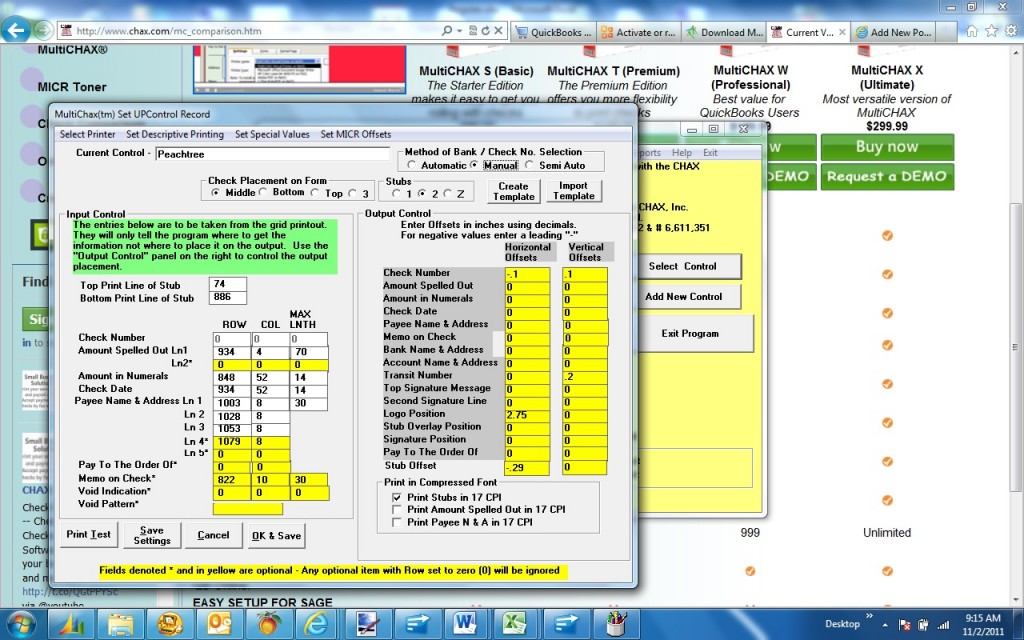
Next you will add bank accounts for each control. Key in your Bank Name and information for the top of the check. Key in your Company Name and information. Entering the MICR routing number and bank account number is very easy. Use the shift & and shift / key for the delimiters. Enter a quick print bank name to easily recognize the bank account when printing.

When printing you will select your check form in the software and the Multichax Virtual Printer. I did modify the AP check and removed several fields I did not want. Other than that no modifications to the check in Peachtree or QB should be necessary. Once the output to the Multichax Virtual Printer is detected you will be prompted by Chax to select the Control and checkbook account. In my case I would enter the userid and password for either the AP or Payroll control. Then I double click on the checkbook to use for the check run.
The support from Chax was outstanding and I probably recieved the best service I have received in months from a software vendor.
If you have more than one or two checkbooks and multiple company files the cost savings could be extreme. In some cases pre-printed continuous forms cost $250/box. There are also the time savings and the security issues with pre-printed checks.

